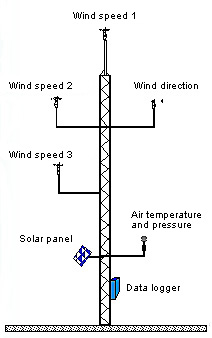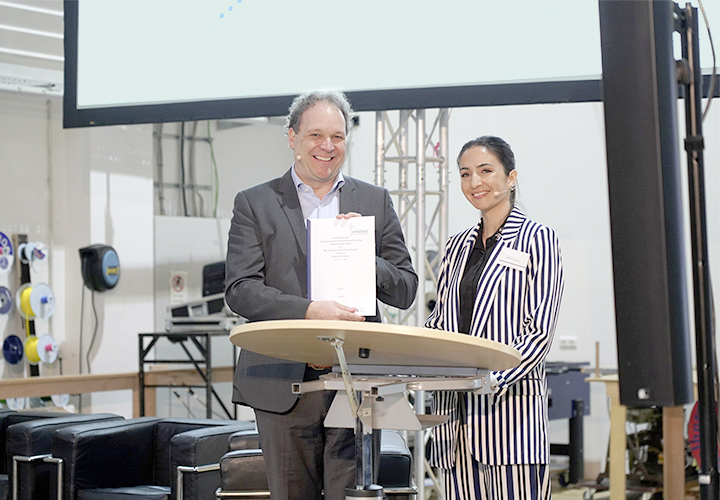Wind Potential Measurement
Site Evaluation
Together with the knowledge of the performance curve of a wind energy system (WES) it is essential to have reliable data about the wind potential in order to plan and evaluate a wind park. It is especially important since the wind potential is subject to strong fluctuations depending on time and site. The determined wind potential is the basis for the projection of the average annual energy generation of the planned WES.
Benefit to the Customer
 Wind potential analyses, which are defined by banks as a "conditio sine qua non" for projects, provide planning security and reduce elements of uncertainty. The costs required for them are negligible compared to the risk of misinvestments and any resulting claims for damages.
Wind potential analyses, which are defined by banks as a "conditio sine qua non" for projects, provide planning security and reduce elements of uncertainty. The costs required for them are negligible compared to the risk of misinvestments and any resulting claims for damages.
The data are normally recorded using a wind measuring tower with calibrated sensors. wtg successfully uses additional up-to-date technology such as the SODAR system.
After the initial wind measurement, the operation of the wind measuring tower can be continued on site, in order to measure the performance curves of the WES. These performance curve measurements enable the investor and operator to assert liability claims against the manufacturer if any technical faults are found during the follow-up measurements of the WES that are thought necessary.
wtg is accredited for wind potential measurements according to ISO EN 17025.
Implementation
For the determination of the wind potential using wind measuring towers, the measuring tower should be installed corresponding to the hub height of the planned WES. Wind speeds at a minimum of two heights and the wind directions are recorded using a data logger and calibrated anemometers only. In order to determine the air density, air temperature and pressure can be recorded too.
The continually recorded 1- or 10-minute data are saved to the data logger and can be transmitted via GSM network, telephone or notebook. The measurements should span a minimum of 12 months, in order to take any seasonal effects into account. Using statistical programmes, the calculations result in the following:
- Determination of the turbulence density at the site
- Frequency distribution and average annual wind speeds for all measuring heights
- Height exponent from the measured wind speeds
- Diurnal variation and lulls
The wind conditions at future sites can be calculated based on the data of meteorological stations that have been recorded for years. The used computer programmes are based on a mathematical model determining the wind conditions of a site according to surface roughness (topography), ground level (orography) and individual obstacles in the surroundings of the planned installation site.
Based on the energy potential of the planned sites and the digital performance curve in the computer for random system types, finally the expected energy yield with an availability of 100% of the WES is calculated. For this it is essential that the performance curve of the planned WES is measured by a neutral organisation according to applicable standards, since only this measurement allows a reliable energy yield calculation.




